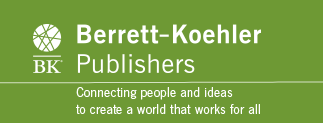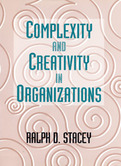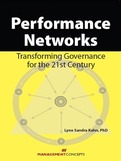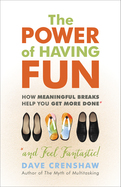Taking his typically in-depth, historically informed view, Thom Hartmann examines how guns have played important roles throughout American history, from early European settlement to the Revolutionary War and Manifest Destiny, through the use of Slave Patrols in the Deep South (which became the “well-regulated militias” so debated in 1787), to the assassination of John F. Kennedy and recent school massacres.
Looking at the present, Hartmann documents how inequality in America and the number of people killed in mass shootings have grown together over the last fifty years. Finally, he identifies a handful of common-sense and powerful solutions that would address the issue at different levels: from getting money out of politics to get the National Rifle Association out of lobbying, to passing laws that would treat gun ownership like car ownership (title, license, insurance), to addressing the social despair and economic inequality that drive violent crime and mass shootings.
Today's business environment is characterized by faster technology development and information flow, increasing interconnectedness between organizations, and the much greater diversity between people that this brings. These changes make it increasingly difficult for us foresee the consequences of our actions and stay "in control." Traditional organization theory, however, mandates that we design organizations and predict outcomes, conditioning us to assume that there is no alternative. According to this framework, we simply must foresee and stay in control, for without this there can be no order, only anarchy.
Complexity and Creativity in Organizations explains why managers in organizations cannot use projected future outcomes in action planning because future outcomes are radically unpredictable. Ralph Stacey shows how creative futures emerge from spontaneously self-organizing processes of complex learning. Complexity and Creativity in Organizations is the most comprehensive and thorough treatment of how the study and management of organizations need to change to be in tune with what we are learning from the new science of complexity. In it Stacey presents an entirely new framework for understanding life in organizations.
Combining insights from the new science with insights from psychoanalysis, Stacey posits that repressing the anxiety caused by the unstable, ever-changing nature of today's business world also represses the creative impulses-the "spaces for novelty"-that allow members of a work force to produce their best work. Organizations are creative, he says, when they operate on the edge of chaos. Thus, we should not ask how we can control the future, but rather how we can make sense of our own real, personal experience of life in organizations.
In Complexity and Creativity in Organizations , Stacey details this theory, and offers a new framework for organizations to follow. Using the science of complexity as a starting point, he pulls together many insights into behavior and organizational functioning that currently lie at the fringes of research and practice. This book invites people to explore what the new science might mean for understanding life in organizations, and shows how it can be used as a framework for understanding the processes that produce emergence rather than intentional strategies. Stacey presents an entirely new perspective on what it means for an organization to learn.
- From a pioneer in the application of the new science for understanding life in organizations
- Demonstrates what leadership means in an environment where control is impossible
- Provides a rigorous model of the learning organization that takes into account the real-life anxieties involved
2009
Working across government agencies and boundaries is difficult at any level of government, but it may be the only solution for today's problems. Performance Networks: Transforming Governance for the 21st Century offers the public manager a valuable new governance tool. This resource provides a practical approach to:
• Understanding the history and workings of government-based networks
• Establishing multi-agency, cross boundary partnerships and making them work
• Improving citizen engagement
On the Brink of Everything is an exploration of Parker Palmer's experience of living and aging, written in hopes of encouraging readers of every age to explore their life course. It is not a "guide to" or "handbook" for "getting old"--something all of us are doing all the time. Instead it's a set of meditations in prose and poetry that turn the prism on the meaning(s) of one's life--and on the importance of staying meaningfully engaged with life until the end. From beginning to end the book is packed with both humor and gravitas.
In Joel's Schwartzberg's ten-plus years as a strategic communications trainer, the biggest obstacle he's come across-one that connects directly to nervousness, stammering, rambling, and epic fail-is that most speakers and writers don't have a point. They typically have just a title, a theme, a topic, an idea, an assertion, a catchphrase, or even something much less.
A point is something more. It's a contention you can propose, argue, defend, illustrate, and prove. A point offers a position of potential value. Global warming is real is not a point. Scientific evidence shows that global warming is a real, human-generated problem that will have a devastating environmental and financial impact is a point. When we have a point, our influence snaps into place. We communicate belief, conviction, and urgency. This book shows you how to identify your point, leverage it, stick to it, and sell it and how to train others to identify and successfully make their own points.
If you want to be successful, having fun is not an option. It's a necessity. By making fun a top priority—taking meaningful, enjoyable breaks each day, week, month, and year—you'll not only be happier but be more productive, too!
Using scientific evidence, real-world case studies, and a healthy dose of wit, bestselling author Dave Crenshaw shows that a regular respite is like a little oasis in your workday. It refreshes and reinvigorates, recharges your batteries—helping you accomplish more with less effort!
The Power of Having Fun coaches you through the five-step system thousands of leaders have utilized to boost productivity and propel their careers—all while feeling fantastic! Let Dave Crenshaw lower your stress, raise your results, and restore recess to your routine.























